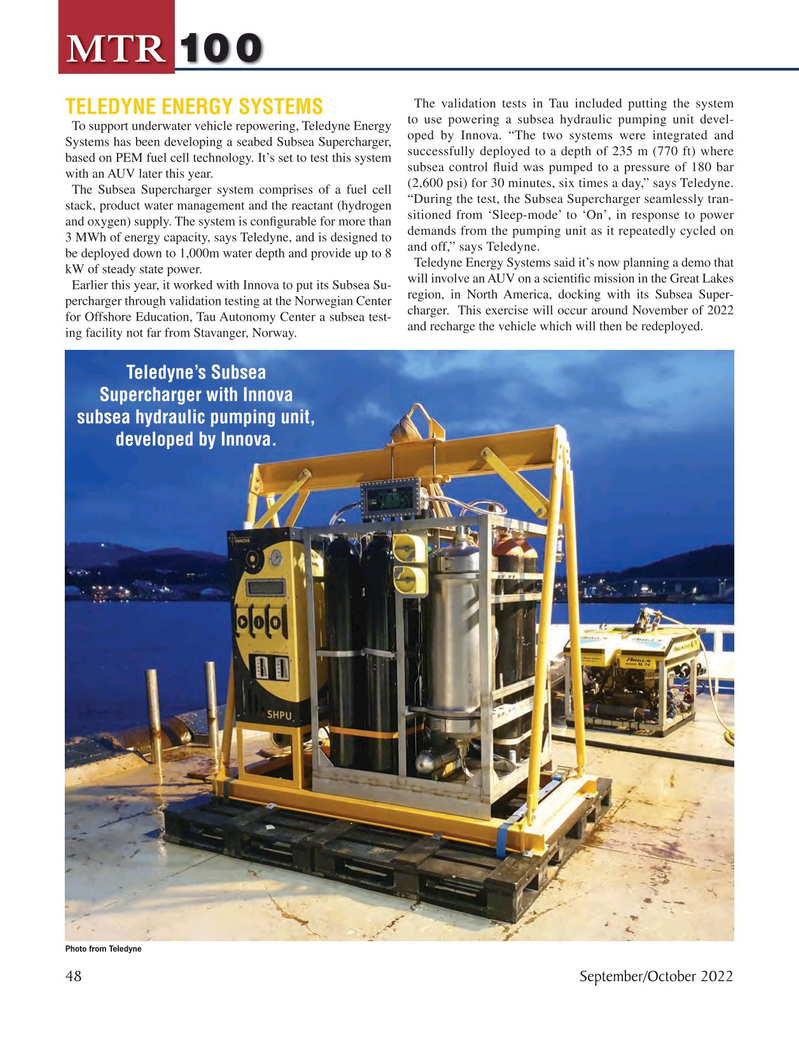
Page 48: of Marine Technology Magazine (September 2022)
Read this page in Pdf, Flash or Html5 edition of September 2022 Marine Technology Magazine
MTR 100
The validation tests in Tau included putting the system
TELEDYNE ENERGY SYSTEMS to use powering a subsea hydraulic pumping unit devel-
To support underwater vehicle repowering, Teledyne Energy oped by Innova. “The two systems were integrated and
Systems has been developing a seabed Subsea Supercharger, successfully deployed to a depth of 235 m (770 ft) where based on PEM fuel cell technology. It’s set to test this system subsea control ? uid was pumped to a pressure of 180 bar with an AUV later this year.
The Subsea Supercharger system comprises of a fuel cell (2,600 psi) for 30 minutes, six times a day,” says Teledyne. “During the test, the Subsea Supercharger seamlessly tran- stack, product water management and the reactant (hydrogen sitioned from ‘Sleep-mode’ to ‘On’, in response to power and oxygen) supply. The system is con? gurable for more than demands from the pumping unit as it repeatedly cycled on 3 MWh of energy capacity, says Teledyne, and is designed to and off,” says Teledyne. be deployed down to 1,000m water depth and provide up to 8
Teledyne Energy Systems said it’s now planning a demo that kW of steady state power. will involve an AUV on a scienti? c mission in the Great Lakes
Earlier this year, it worked with Innova to put its Subsea Su- region, in North America, docking with its Subsea Super- percharger through validation testing at the Norwegian Center charger. This exercise will occur around November of 2022 for Offshore Education, Tau Autonomy Center a subsea test- and recharge the vehicle which will then be redeployed. ing facility not far from Stavanger, Norway.
Teledyne’s Subsea
Supercharger with Innova subsea hydraulic pumping unit, developed by Innova.
Photo from Teledyne 48 September/October 2022
MTR #7 (34-49).indd 48 9/29/2022 9:24:51 AM

 47
47

 49
49
